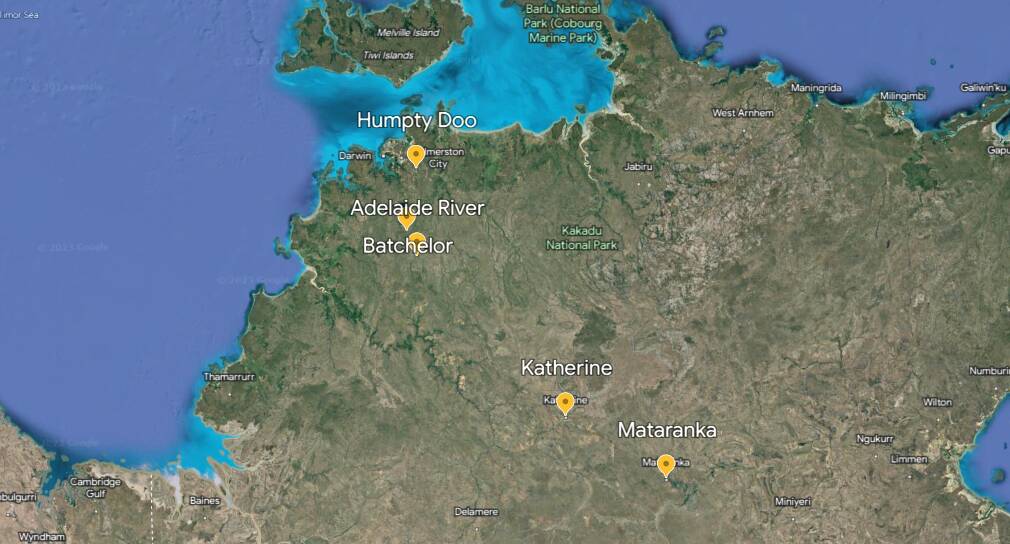Avoiding the native fauna is an inevitable part of driving on Australian roads but one in seven drivers say they have no idea how they would react if a kangaroo bounded across their car's path.
More than three in five Australian drivers said they were likely to swerve or slam on the breaks to avoid hitting an animal, according to research from AAMI.
The research analysed 17,000 animal collision claims made in 2022 and found one in seven cars were written off from severe damage.
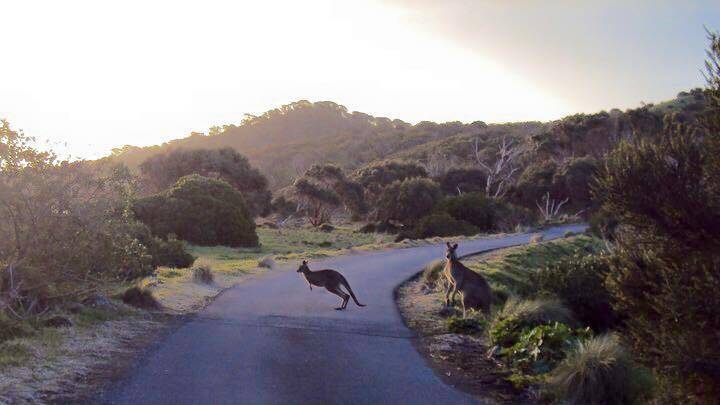
Any animal can cut an unfortunate path across a deadly road but the main culprits were kangaroos, wallabies, wombats, dogs, deer and cows.
The research identified Australia's animal collision hotspots including the most dangerous times of the day, and the year to be on the road.
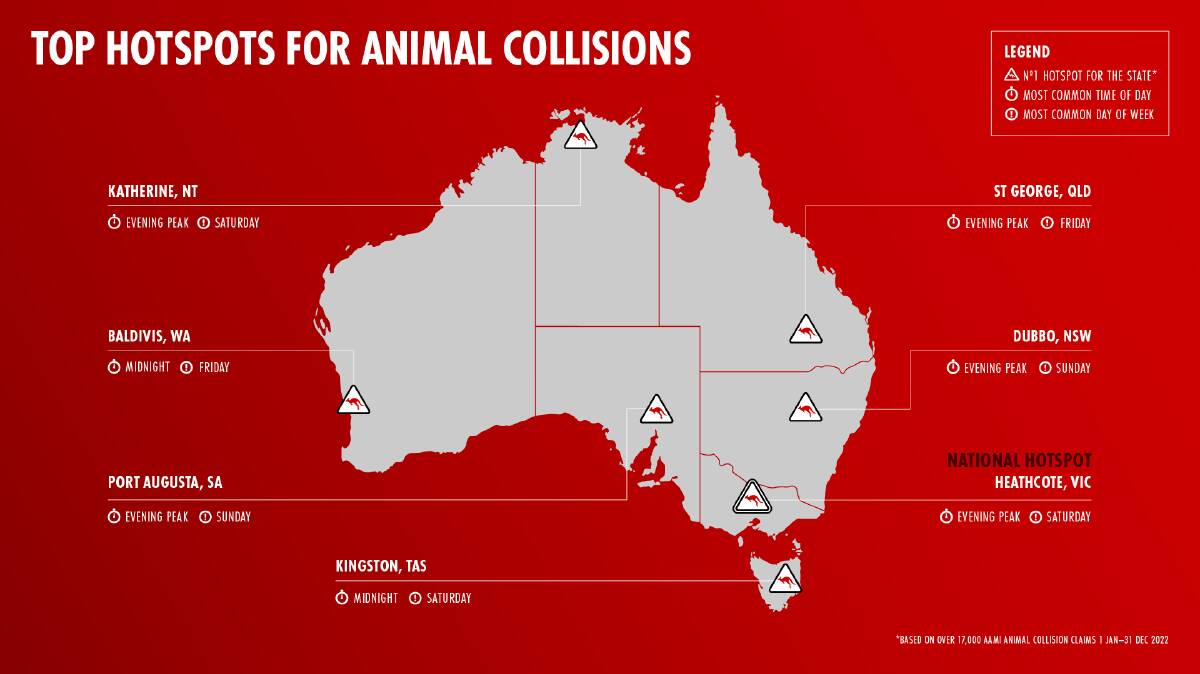
AAMI head of motor claims Kahl Dwight said drivers should slow down and brake if an animal appeared in their lane but avoid endangering other cars on the road.
"It's far less dangerous to keep driving and damage your car than swerve to avoid it and collide with another vehicle or tree," he said.
Dark, winter months are a perilous time for animals on our roads with 30 per cent of wildlife collisions happening between June and August, the research found.
WIRES campaigns manager Kristie Newton said the loss of native animals had a huge impact on Australia's biodiversity and endangered species.
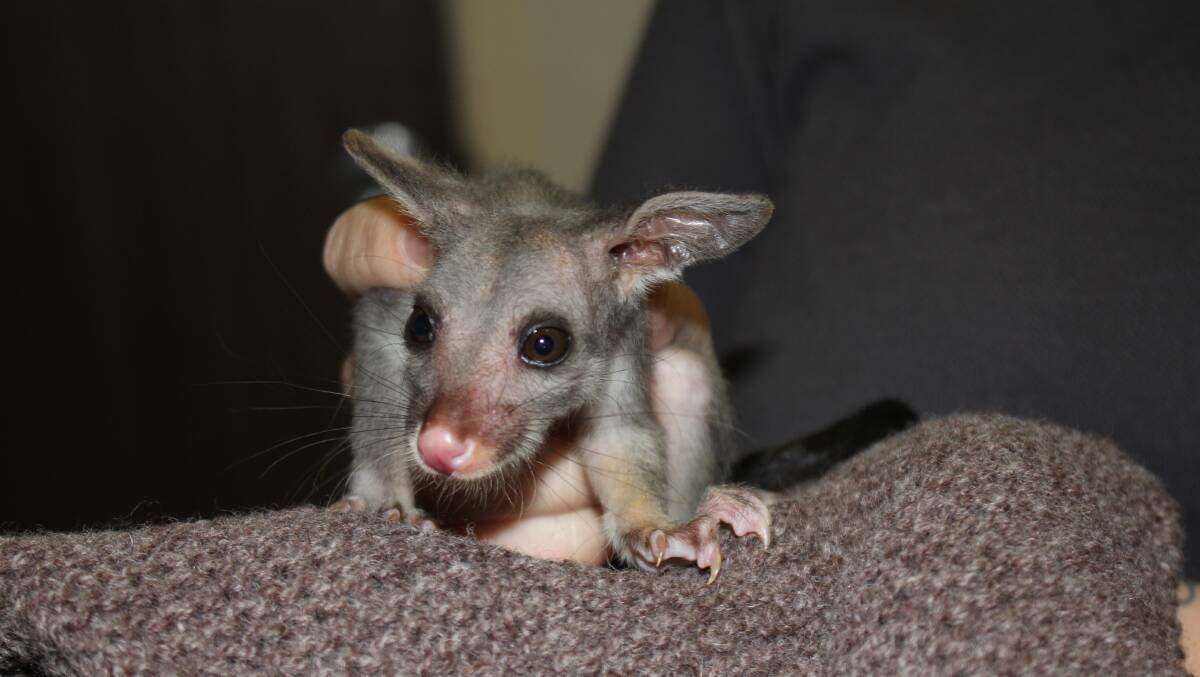
"These types of collisions are particularly detrimental to koala populations, which are in serious decline across the country," she said.
"If the animal has died due to road trauma - especially if it is a kangaroo - check if it is a female and if there's a joey in her pouch or around her," she said.
Your local wildlife rescue service will take any injured animals, she said.
IN OTHER NEWS:
New South Wales
New South Wales' peak animal collision hotspot is Dubbo particularly on Sunday evening.
The research found dusk was the most dangerous time for wildlife-related road accidents with 26 per cent of accidents occuring between 4:30pm and 8pm.
Goulburn, Sutton, Cooma and Bungendore rank as the next most dangerous places to spot wildlife on the roads.
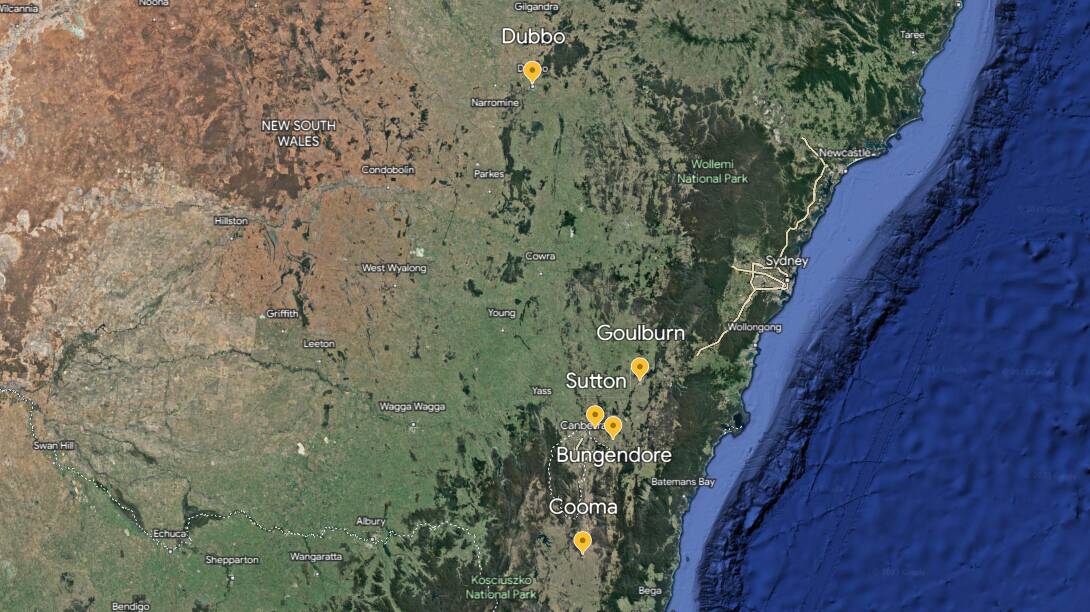
Victoria
Heathcote is Victoria's animal road accident hotspot and particularly on Saturday evening.
Wallan, Gisborne, Halls Gap and Woodend were the next most dangerous spots.
Weekend drivers beware; almost one third of Australia's animal collisions happen on Saturday or Sunday.
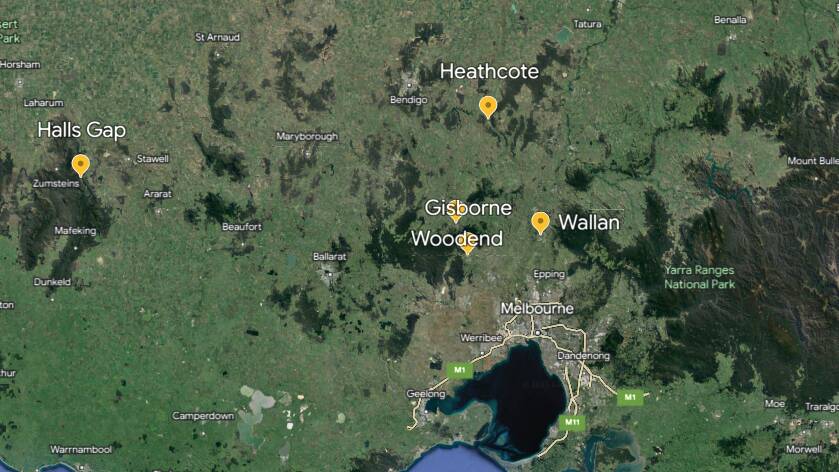
Queensland
The rural town of St George is Queensland's hotspot for animal road accidents with most incidents happening on Friday evening.
Townsville, Roma, Warwick and Mareeba were the state's next major hotspots.
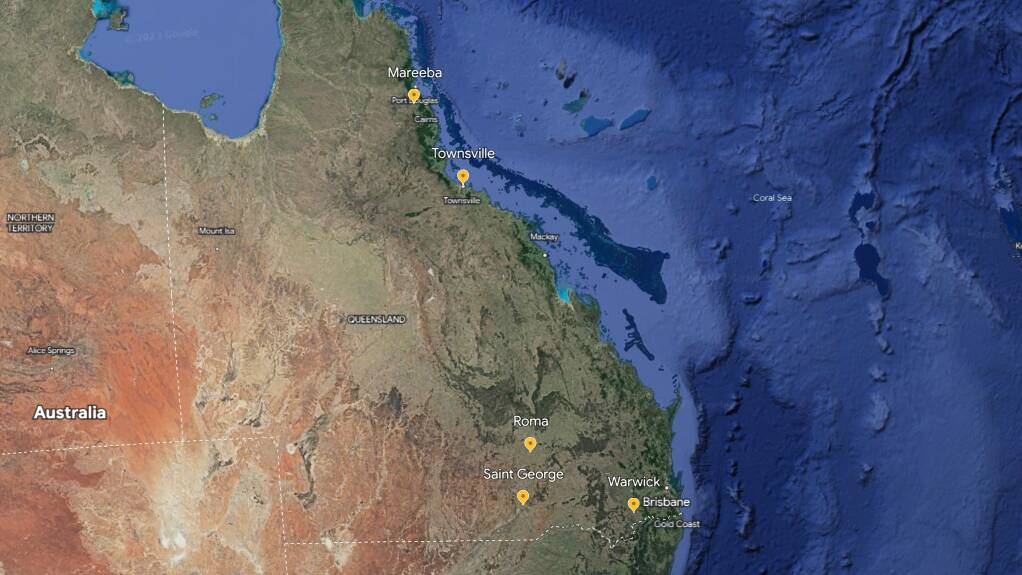
Western Australia
Baldivis, a semi-rural residential suburb 46 kilometres south of Perth, is Western Australia's top animal collision site. Baldivis roads are particularly dangerous late Friday night, the research found.
Nannup, Jurien Bay, Bullsbrook and Kalbarri rank among the state's next most dangerous spots.
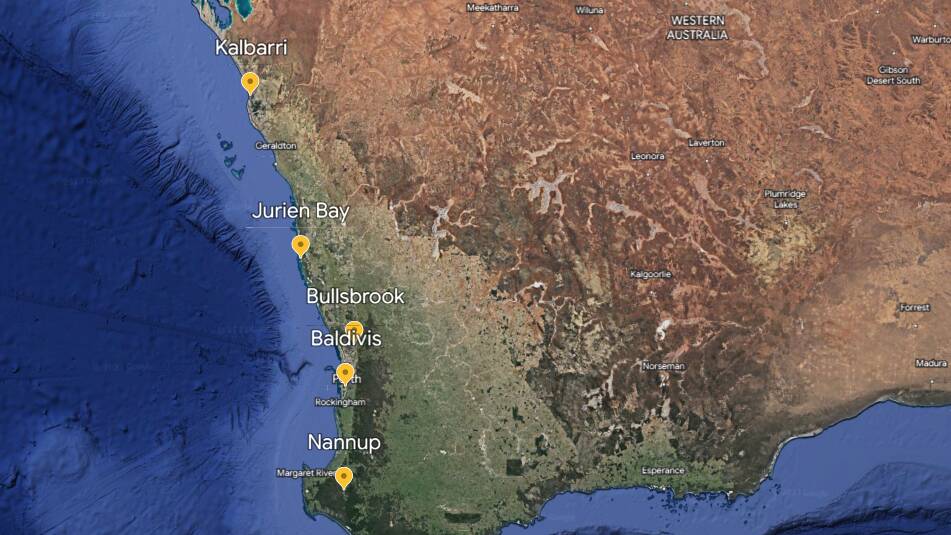
Tasmania
Kingston is Tasmania's top hotspot for animal-related crashes particularly late on a Saturday night.
Launceston, Cambridge, Huonville and Latrobe rank as the next most dangerous places to spot wildlife.
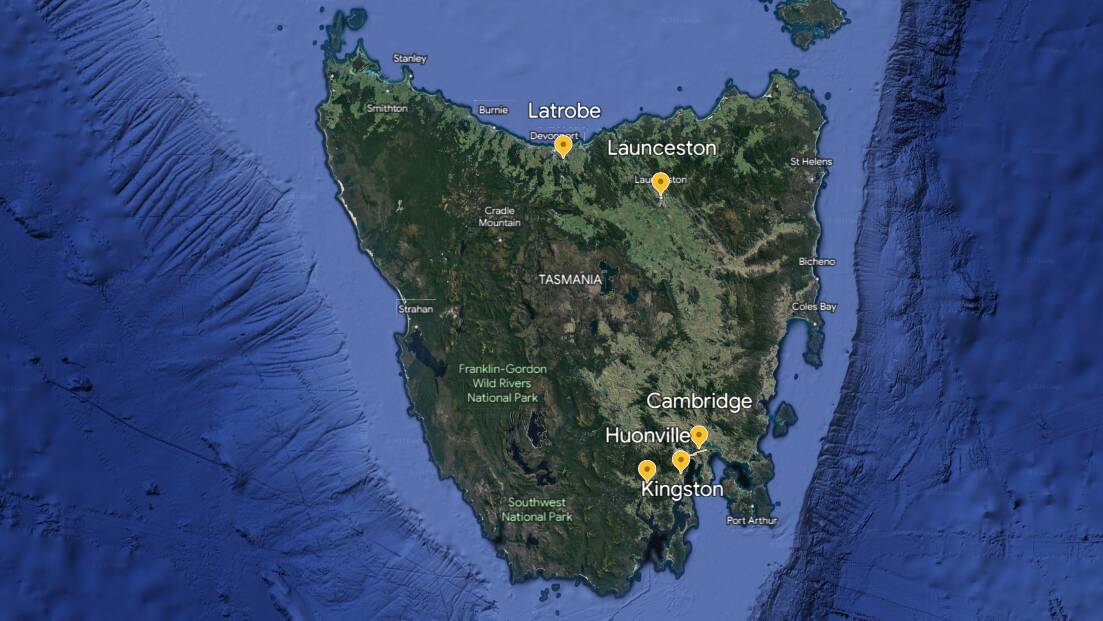
South Australia
South Australia's peak animal collision hotspot is Port Augusta particularly on Sunday evening.
Mount Gambier, Hawker, Morgan and Orroroo rank as the next most dangerous places to spot wildlife on the roads.
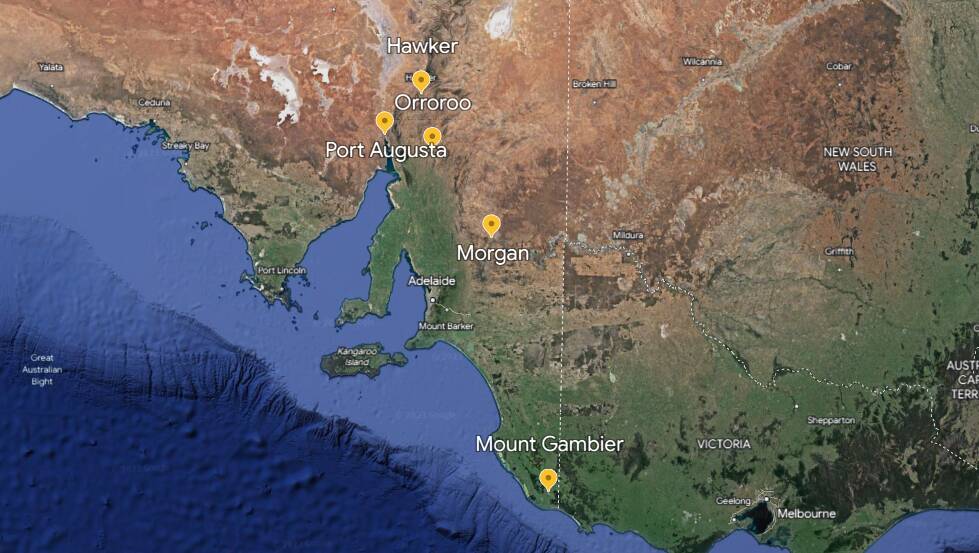
Australian Capital Territory
Canberra is the ACT's top animal collision site and is particularly dangerous early Sunday morning, the research found.
Kambah, Hume, Weston and Symonston rank among the territory's next most dangerous spots.
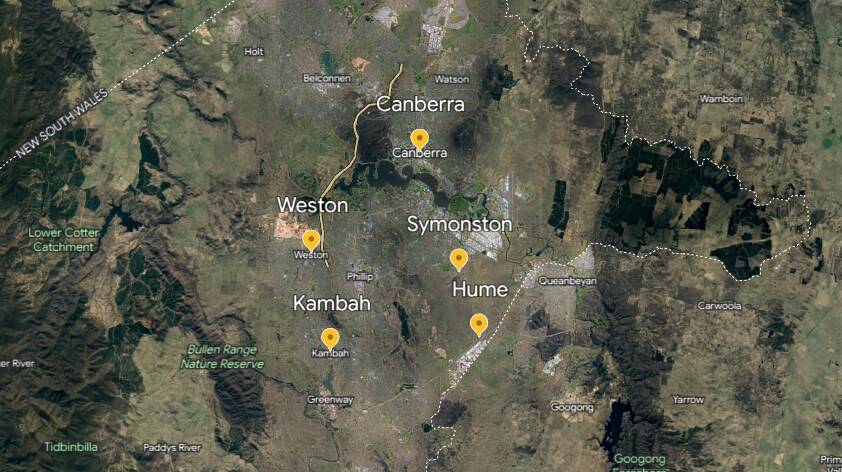
Northern Territory
The rural town of Katherine is the Northern Territory's hotspot for animal road accidents with most incidents happening on Saturday evening.
Adelaide River, Humpty Doo, Mataranka and Batchelor are the territory's next major hotspots.
